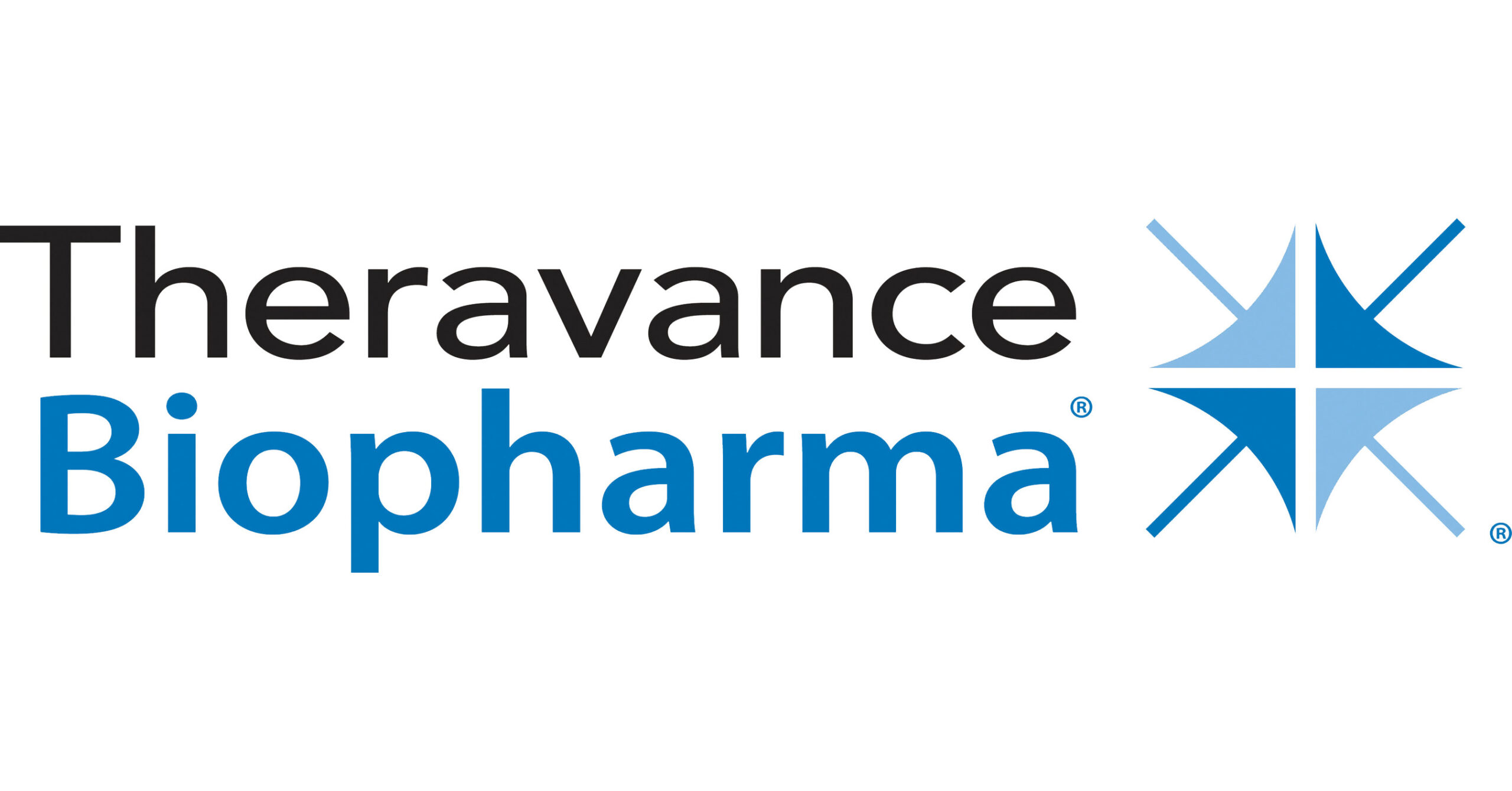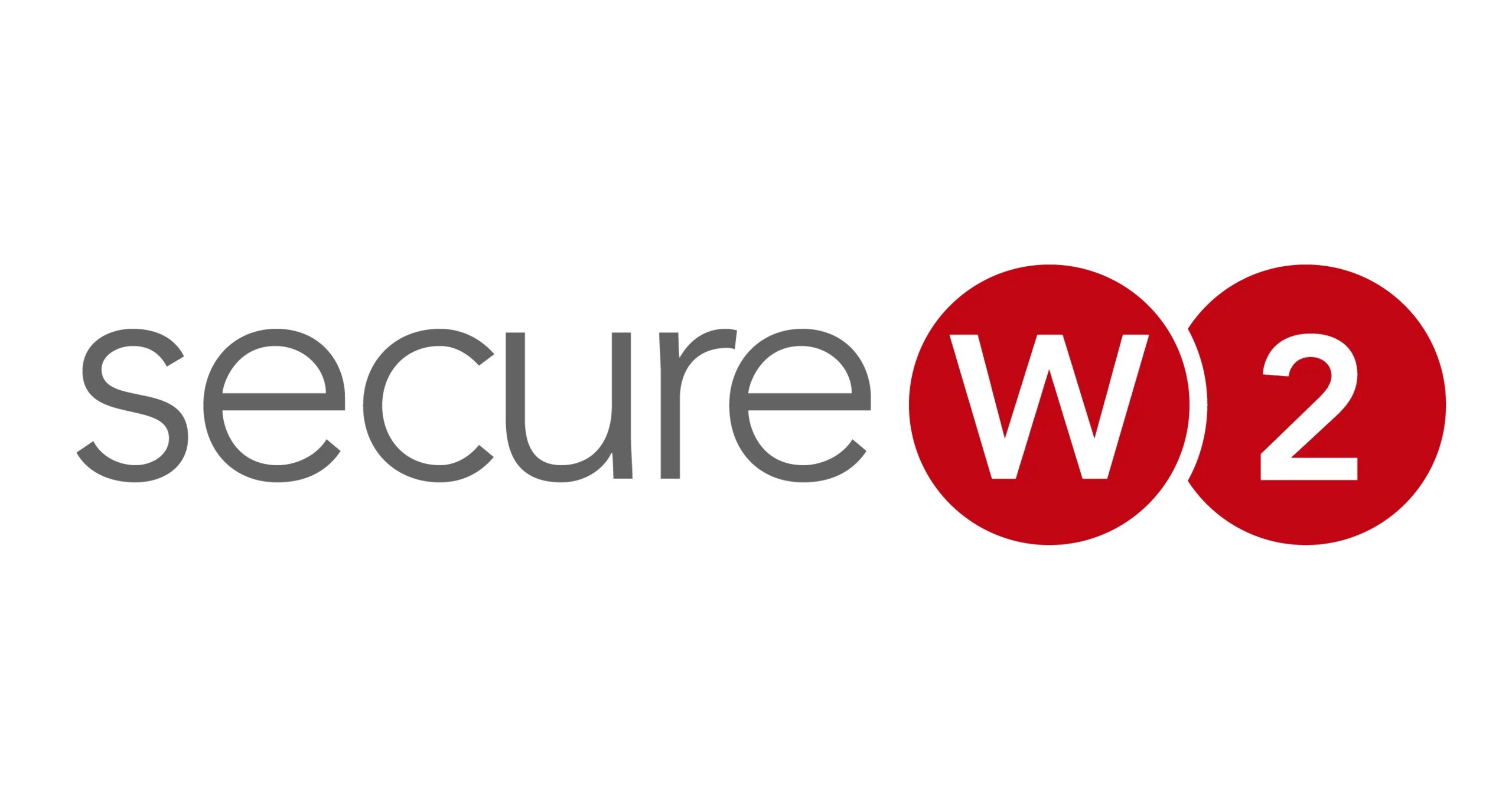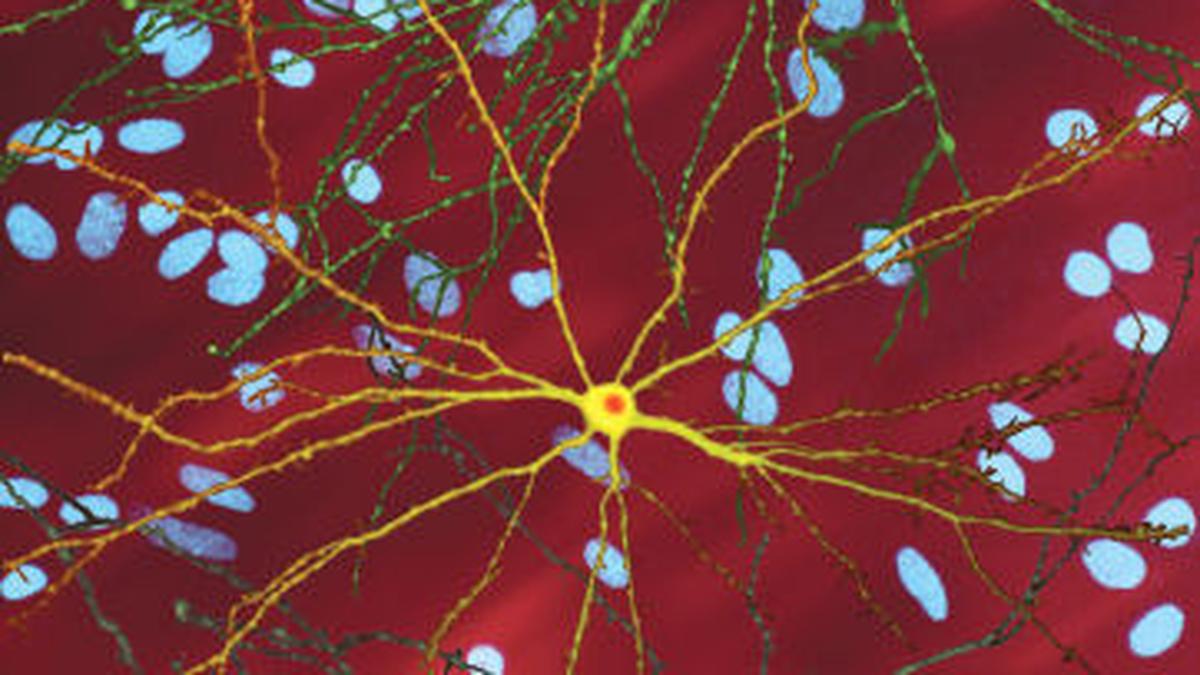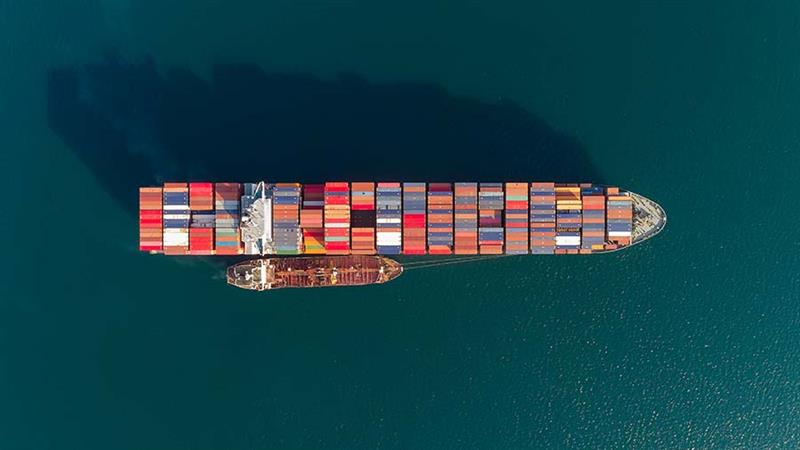A team of Chinese scientists has uncovered a hidden 3D structure in rice DNA that allows the crop to grow more grain while using less nitrogen fertilizer. The finding, published in Nature Genetics by researchers from the Chinese Academy…
Blog
-

Diabetes Linked to Higher Risk of Late-Onset Schizophrenia
A NATIONWIDE cohort study has revealed that adults diagnosed with type 2 diabetes (T2D) in midlife and old age face a significantly increased risk of developing very late-onset schizophrenia. The research, conducted in Israel, followed nearly…
Continue Reading
-

Theravance Biopharma to Present Data on Ampreloxetine at the 36th International Symposium on The Autonomic Nervous System
- Ampreloxetine clinical development program to be featured in four presentations at the upcoming International Symposium on The Autonomic Nervous System
- Topline results from the ongoing Phase 3 CYPRESS study of ampreloxetine anticipated in Q1 2026
DUBLIN, Oct. 29, 2025 /PRNewswire/ — Theravance Biopharma, Inc. (NASDAQ: TBPH) today announced that it will be participating at the 36th International Symposium on the Autonomic Nervous System, organized by the American Autonomic Society (AAS), taking place November 5-8, 2025, in Clearwater Beach, FL. The Company will have one platform presentation and three poster presentations on its clinical development program for ampreloxetine, a potential first-in-class norepinephrine reuptake inhibitor in development for the treatment of symptomatic neurogenic orthostatic hypotension (nOH) symptoms due to multiple system atrophy (MSA).
“We are excited to have a strong presence at the upcoming International Symposium on the Autonomic Nervous System. Our platform presentation will highlight results from the previous REDWOOD trial, where we observed a durable symptomatic nOH benefit with improvement in activities of daily living in the pre-specified subgroup analysis in patients with MSA treated with ampreloxetine1,” commented Lucy Norcliffe-Kaufmann, Ph.D., Theravance Biopharma’s Executive Director of Clinical Science. “Additionally, we are pleased to share the rigorous methodologies we developed based on our previous trial experience to support enrollment and patient retention. By applying these insights, we were well positioned to successfully address the executional challenges associated with clinical studies in rare and severe neurodegenerative diseases.”
Presentations information and key findings:
Platform presentation: Precision therapy with ampreloxetine for neurogenic orthostatic hypotension in multiple system atrophy
Presenter: Lucy Norcliffe-Kaufmann, Ph.D.; Theravance Biopharma’s Executive Director of Clinical Science and Associate Professor, New York University Langone Health Dysautonomia Center
Session date and time: Saturday, November 8, 2025, at 8:30 am ETThe following three posters will be presented at Poster Session II, taking place on Thursday, November 6, 2025, at 7:00-8:30 pm ET:
Poster title: The impact of ampreloxetine on supine hypertension: an ambulatory blood pressure monitoring study
Presenter: Lucy Norcliffe-Kaufmann, Ph.D.; Theravance Biopharma’s Executive Director of Clinical Science and Associate Professor, New York University Langone Health Dysautonomia Center
Poster number: 9Poster title: Retention strategies in rare disease clinical trials: a case study of symptomatic treatment for multiple system atrophy
Presenter: Molly Szpyhulsky, MBA, BSN, RN; Theravance Biopharma U.S.
Poster number: 15Poster title: Enrollment strategies in a phase III trial for MSA-related nOH: insights from global investigators
Presenter: Molly Szpyhulsky, MBA, BSN, RN; Theravance Biopharma U.S.
Poster number: 10About Ampreloxetine
Ampreloxetine, an investigational, once-daily, selective norepinephrine reuptake inhibitor in development for the treatment of symptomatic neurogenic orthostatic hypotension (nOH) in patients with multiple system atrophy (MSA). The unique benefits of ampreloxetine treatment reported in MSA patients from Study 0170 included an increase in norepinephrine levels, a favorable impact on blood pressure, clinically meaningful and durable symptom improvement, and no signal for worsening of supine hypertension. In the US, the Company has been granted an Orphan Drug Designation for ampreloxetine for the treatment of symptomatic nOH in patients with MSA and, if results from the ongoing Phase 3 CYPRESS study are supportive, plans to file an NDA for full approval in this indication.About the Phase 3 CYPRESS (Study 0197) Study
The CYPRESS Study (NCT05696717) is a registrational Phase 3, multi-center, randomized withdrawal study to evaluate the efficacy and durability of ampreloxetine in participants with MSA and symptomatic nOH after 20 weeks of treatment; the primary endpoint of the study is change in the Orthostatic Hypotension Symptom Assessment (OHSA) composite score. The Study includes four periods: screening, open label (12-week period, participants will receive a single daily 10 mg dose of ampreloxetine), randomized withdrawal (eight-week period, double-blind, placebo-controlled, participants will receive a single daily 10 mg dose of placebo or ampreloxetine), and a long-term treatment extension. Secondary outcome measures include change from baseline in Orthostatic Hypotension Daily Activity Scale (OHDAS) item 1 (activities that require standing for a short time) and item 3 (activities that require walking for a short time).About the Phase 3 SEQUOIA (Study 0169) and REDWOOD (Study 0170) Studies
Study 0169 (NCT03750552) was a Phase 3, 4-week, multi-center, randomized, double-blind, placebo-controlled, parallel-group study to evaluate the efficacy and safety of ampreloxetine compared to placebo in patients with symptomatic nOH (n=195). Patients from Study 0169 were eligible to enter into Study 0170 (NCT03829657), a Phase 3, multi-center, 22-week study comprising a 16-week open-label period and a 6-week double-blind, placebo-controlled, randomized withdrawal period to evaluate the sustained benefit in efficacy and safety of ampreloxetine in patients with symptomatic nOH. The primary endpoint for Study 0170 of treatment failure at week 6 was defined as a worsening of both Orthostatic Hypotension Symptom Assessment Scale (OHSA) question #1 and Patient Global Impression of Severity (PGI-S) scores by 1.0 point. After Study 0169 did not meet its primary endpoint, the Company took actions to close out the ongoing clinical program including Study 0170. The study was more than 80% enrolled (n=128/154 planned) despite stopping early. The primary endpoint was not statistically significant for the overall population of patients, which included patients with Parkinson’s disease, pure autonomic failure and MSA (odds ratio=0.6; p-value=0.196). The pre-specified subgroup analysis by disease type suggests the benefit seen in patients receiving ampreloxetine was largely driven by MSA patients (n=40). An odds ratio of 0.28 (95% CI: 0.05, 1.22) was observed in MSA patients indicating a 72% reduction in the odds of treatment failure with ampreloxetine compared to placebo. The benefit to MSA patients was observed in multiple endpoints including OHSA composite, Orthostatic Hypotension Daily Activities Scale (OHDAS) composite, Orthostatic Hypotension Questionnaire (OHQ) composite and OHSA #1.1About Multiple System Atrophy (MSA) and Symptomatic Neurogenic Orthostatic Hypotension (nOH)
MSA is a progressive brain disorder that affects movement and balance and disrupts the function of the autonomic nervous system. The autonomic nervous system controls body functions that are mostly involuntary. One of the most frequent autonomic symptoms associated with MSA is a sudden drop in blood pressure upon standing (nOH).2 There are approximately 50,000 MSA patients in the US3 and 70-90% of MSA patients experience nOH symptoms.4 Despite available therapies, many MSA patients remain symptomatic with nOH.5Neurogenic orthostatic hypotension (nOH) is a rare disorder defined as a fall in systolic blood pressure of ⩾20 mm Hg or diastolic blood pressure of ⩾10 mm Hg, within 3 minutes of standing. Severely affected patients are unable to stand for more than a few seconds because of their decrease in blood pressure, leading to cerebral hypoperfusion and syncope. A debilitating disorder, nOH results in a range of symptoms including dizziness, lightheadedness, fainting, fatigue, blurry vision, weakness, trouble concentrating, and head and neck pain.
About Theravance Biopharma
Theravance Biopharma, Inc.’s focus is to deliver Medicines that Make a Difference® in people’s lives. In pursuit of its purpose, Theravance Biopharma leverages decades of expertise, which has led to the development of FDA-approved YUPELRI® (revefenacin) inhalation solution indicated for the maintenance treatment of patients with chronic obstructive pulmonary disease (COPD). Ampreloxetine, its late-stage investigational once-daily norepinephrine reuptake inhibitor in development for symptomatic neurogenic orthostatic hypotension (nOH) in patients with Multiple System Atrophy (MSA), has the potential to be a first in class therapy effective in treating a constellation of cardinal symptoms in MSA patients. The Company is committed to creating/driving shareholder value.For more information, please visit www.theravance.com.
THERAVANCE BIOPHARMA®, THERAVANCE® and the Cross/Star logo are registered trademarks of the Theravance Biopharma group of companies (in the U.S. and certain other countries).YUPELRI® is a registered trademark of Viatris Specialty LLC. Trademarks, trade names or service marks of other companies appearing on this press release are the property of their respective owners.
Forward-Looking Statements
This press release will contain certain “forward-looking” statements as that term is defined in the Private Securities Litigation Reform Act of 1995 regarding, among other things, statements relating to goals, plans, objectives, expectations and future events. Theravance Biopharma, Inc. (the “Company”) intends such forward-looking statements to be covered by the safe harbor provisions for forward-looking statements contained in Section 21E of the Securities Exchange Act of 1934, as amended, and the Private Securities Litigation Reform Act of 1995. Examples of such statements include statements relating to: the Company’s expectations regarding its future profitability, expenses and uses of cash, the Company’s goals, designs, strategies, plans and objectives, future growth of YUPELRI sales, future royalty payments, the ability to provide value to shareholders, the Company’s regulatory strategies and timing of clinical studies, possible safety, efficacy or differentiation of our investigational therapy, the status of patent infringement litigation initiated by the Company and its partner against certain generic companies in federal district courts; contingent payments due to the Company from the sale of the Company’s TRELEGY ELLIPTA royalty interests to Royalty Pharma, and expectations around the use of OHSA scores as endpoints for clinical trials. These statements are based on the current estimates and assumptions of the management of Theravance Biopharma as of the date of this press release and the conference call and are subject to risks, uncertainties, changes in circumstances, assumptions and other factors that may cause the actual results of Theravance Biopharma to be materially different from those reflected in the forward-looking statements. Important factors that could cause actual results to differ materially from those indicated by such forward-looking statements include, among others, risks related to: factors that could increase the Company’s cash requirements or expenses beyond its expectations and any factors that could adversely affect its profitability, whether the milestone thresholds can be achieved, delays or difficulties in commencing, enrolling or completing clinical studies, the potential that results from clinical or non-clinical studies indicate the Company’s product candidates or product are unsafe, ineffective or not differentiated, risks of decisions from regulatory authorities that are unfavorable to the Company, dependence on third parties to conduct clinical studies, delays or failure to achieve and maintain regulatory approvals for product candidates, risks of collaborating with or relying on third parties to discover, develop, manufacture and commercialize products, and risks associated with establishing and maintaining sales, marketing and distribution capabilities with appropriate technical expertise and supporting infrastructure, the ability of the Company to protect and to enforce its intellectual property rights, volatility and fluctuations in the trading price and volume of the Company’s shares, and general economic and market conditions. Other risks affecting the Company are in the Company’s Form 10-Q filed with the SEC on August 13, 2025, and other periodic reports filed with the SEC. In addition to the risks described above and in Theravance Biopharma’s filings with the SEC, other unknown or unpredictable factors also could affect Theravance Biopharma’s results. No forward-looking statements can be guaranteed, and actual results may differ materially from such statements. Given these uncertainties, you should not place undue reliance on these forward-looking statements. Theravance Biopharma assumes no obligation to update its forward-looking statements on account of new information, future events or otherwise, except as required by law.Contact:
[email protected]
650-808-40451 Freeman R, et al. Precision therapy with ampreloxetine for neurogenic orthostatic hypotension in multiple system atrophy. MedRxiv. https://www.medrxiv.org/content/10.1101/2025.08.12.25332833v1.
2https://medlineplus.gov/genetics/condition/multiple-system-atrophy/
3 UCSD Neurological Institute (25K-75K, with ~10K new cases per year); NIH National Institute of Neurological Disorders and Stroke (15K-50K).
4 Delveinsight MSA Market Forecast (2023); Symptoms associated with orthostatic hypotension in pure autonomic failure and multiple systems atrophy, CJ Mathias (1999).
5 Data on file. MSA Natural History Statistics, NYU September 2019.SOURCE Theravance Biopharma, Inc.
Continue Reading
-

SecureW2 Advances Continuous Trust Enforcement with New Security Integrations
Expanded telemetry from SentinelOne, Jamf School, and Microsoft Entra enhances certificate-based access control across enrollment and authentication
SEATTLE, Oct. 29, 2025…
Continue Reading
-

Rhea Seehorn leans into happiness in Vince Gilligan’s ‘Pluribus’
“Who are you really? What is real happiness? What do you actually need for happiness?” Rhea Seehorn murmurs.
It’s an otherwise ordinary Wednesday afternoon, steps away from bookshelves stuffed with works like “East of Eden” by John…
Continue Reading
-

Researchers, families confront Huntington’s with rhythm and resolve
The Huntington’s Disease Society of India (HDSI) hosted its second annual meeting at NIMHANS, Bengaluru, in August this year, bringing together patients, caregivers, researchers, and clinicians working on Huntington’s disease (HD).
“Working…
Continue Reading
-
Five Paris Saint-Germain stars that could make 2025 FIFPRO Men's World 11 – FIFPro
- Five Paris Saint-Germain stars that could make 2025 FIFPRO Men’s World 11 FIFPro
- Nine FC Barcelona nominees for FIFPro World XI FC Barcelona
- Lionel Messi, Cristiano Ronaldo Battle Europe’s Best for Major Honor Sports Illustrated
- 3 Liverpool…
Continue Reading
-

Eating Saturated Fats in Winter Can Affect Fat Metabolism
Next time you’re tempted to raid the pantry for snacks loaded with saturated fat — especially in winter — you might want to consider that the result could be cravings for more high-calorie nibbles.
That’s because, from the…
Continue Reading
-
On World Stroke Day 2025, Fortis neurologist warns of common causes of stroke: Stress, smoking and lack of sleep – Mint
- On World Stroke Day 2025, Fortis neurologist warns of common causes of stroke: Stress, smoking and lack of sleep Mint
- How to spot stroke symptoms early: Act FAST to save a life The Times of India
- Micro-Strokes, Major Clues: Decoding The Earliest…
Continue Reading
-

China’s Green Bunkering Market – Navigating Early Opportunities
China’s green bunkering market is entering an early but pivotal phase as the global maritime industry transitions toward low- and zero-emission fuels. Driven by regulatory pressure, domestic policy support, and growing pilot projects in major ports, China is positioning itself as a leader in green methanol, ammonia, and biofuel supply. For investors and operators, the market presents both new growth opportunities and uncertainty amid an evolving policy, infrastructure, and demand landscape.
Renewable marine fuels are emerging as an exciting frontier in the global energy transition. As international shipping faces mounting regulatory and market pressure to decarbonize, attention has turned to the supply of low- and zero-emission fuels such as methanol, ammonia, hydrogen, and biofuels for ships. However, the industry remains in its infancy, and a combination of uncertain demand, incomplete infrastructure, and underdeveloped regulatory systems means the industry poses both high risk and offers high potential rewards.
China is playing a critical role in the development of the industry, with expanding policy and regulatory frameworks and growing pilot activity. As the world’s largest trading nation, shipbuilder, and emitter, it plays a crucial role in addressing the challenge of maritime decarbonization. In recent years, it has moved rapidly from concept to early commercialization of green bunkering fuels, led by ports such as Shanghai, Dalian, and Ningbo-Zhoushan.
Investors considering whether to enter the market must weigh the opportunities for growth, alignment with ESG and carbon reduction targets, and potential policy support against high upfront costs, safety and infrastructure challenges, and uncertainties around adoption rates.
Explore vital economic, geographic, and regulatory insights for business investors, managers, or expats to navigate China’s business landscape. Our Online Business Guides offer explainer articles, news, useful tools, and videos from on-the-ground advisors who contribute to the Doing Business in China knowledge.
Start exploringDevelopment of China’s green bunkering market
Why China is developing green bunkering fuel
China’s drive to develop green bunkering fuel reflects both its climate commitments and its position as the world’s largest shipbuilding and exporting nation. As the world’s largest emitter of greenhouse gases, China must decarbonize major sectors to meet its “dual carbon” goals of reaching peak emissions before 2030 and carbon neutrality by 2060. Shipping is responsible for 2 to 3 percent of global emissions and is therefore a growing focus for China.
Find Business Support
As a member of the International Maritime Organization (IMO), China is also aligning with the 2023 IMO Strategy on the Reduction of GHG Emissions from Ships, which calls for a 40 percent cut in carbon intensity by 2030 and at least five percent adoption of zero or near-zero emission fuels. Developing green bunkering fuels such as methanol, ammonia, hydrogen, and biofuels is therefore essential for China to remain compliant and competitive.
Domestically, green bunkering supports China’s goal of becoming a leader in clean maritime technology and fuel supply. Pilot projects in Shanghai, Shenzhen, Dalian, and Hainan are building out methanol and biofuel bunkering capacity, while research into ammonia and hydrogen fuels is advancing. These efforts strengthen China’s role in shaping global low-carbon shipping standards and position its ports as future regional bunkering hubs.
Industry growth potential
The global bio bunker fuel market is entering a rapid growth phase as decarbonization targets reshape the shipping industry. Valued at US$407.6 million in 2024, the market is projected to expand at a strong compound annual growth rate (CAGR) of 11.4 percent, reaching US$1.35 billion by 2035, according to research by Fact.MR.
Find Business Support
China is expected to be one of the fastest-growing markets, reaching US$234.5 million by 2035 at a CAGR of 11.7 percent, creating around US$157 million in new opportunities over the decade.
Globally, the clean bunkering landscape is maturing quickly. A report from the Global Maritime Forum released in August 2025 noted that methanol has moved beyond proof of concept, with around 60 methanol-capable vessels already operating, more than 300 ships on order, and nearly 20 ports offering green methanol bunkering. Meanwhile, ammonia is “rapidly approaching proof of concept,” with pilot vessels at sea, engine testing nearing completion, and early bunkering trials underway at major ports.
Recent developments in China’s green fuel bunkering industry
China’s push into green bunker fuels accelerated sharply in 2024 and 2025, with a series of milestones that positioned its ports and shipyards at the forefront of maritime decarbonization. These milestones show China’s rapid progression from pilot-scale biofuel bunkering to a multi-fuel, multi-port ecosystem.
Shanghai – April 10, 2024: The Yangshan Deepwater Port completes China’s first ship-to-ship methanol bunkering. The supply vessel Haigang Zhiyuan delivered 504 tonnes of green methanol to the methanol-powered containership Astrid Maersk while cargo operations continued. This operation demonstrated the technical feasibility of simultaneous bunkering and cargo handling, positioning Shanghai as the first Chinese port capable of supporting international methanol-fueled vessels.
Shenzhen – April 24, 2024: The bunkering vessel “Antong 27” in the Port of Shenzhen bunkered the Liberia-flagged containership Anming with 500 tonnes of B24 biofuel oil and 500 tonnes of low-sulfur fuel oil at Yantian Port. The B24 blend, containing 24 percent biodiesel, reduced carbon emissions by roughly 20 percent. This operation marked Shenzhen’s first international biofuel bunkering and highlighted the city’s commitment to developing a green shipping fuel hub, complete with safety protocols and compliance with international certification standards.
Shanghai – June 20, 2025 – COSCO SHIPPING delivered the “COSCO Shipping Yangpu”, China’s first 16,000 TEU methanol dual-fuel containership built domestically, equipped with a home-produced methanol main engine, to Changxing Island in Shanghai. This vessel was the first domestic order for a ship of this type, the first delivery from a domestic shipyard, and the first onboard installation of a Chinese-made methanol engine.
Hainan – July 2, 2025: The Yangpu received its first bunkering of domestically produced green methanol at Hainan’s Yangpu Port, totaling 200 tonnes derived from food waste and biogas. This operation closed the full domestic supply chain from production to bunkering, proving the feasibility of an entirely Chinese methanol fuel ecosystem and providing a replicable model for global maritime decarbonization.
Dalian – July 15, 2025 – Dalian’s Dayao Bay Port Area completed the first bonded green methanol bunkering in Northeast China for the Yangpu, supplying 500 tonnes sourced from Heilongjiang and Inner Mongolia. The fuel was ISCC-certified and achieved over 100 percent carbon reduction in certain batches. This milestone established a fully integrated bonded supply chain for international vessels, linking production, transportation, storage, and bunkering in Northeast Asia.
Dalian – July 22, 2025 – COSCO Shipping Kawasaki launched construction of the first of a series of 24,000 TEU methanol dual-fuel containerships in Dalian. The same week, Dalian completed the world’s first green ammonia bunkering, supplying a port vessel equipped with a domestically developed ammonia dual-fuel engine. Using 100 percent renewable electricity, the ammonia operation made Dalian the only port globally capable of bunkering biofuel, methanol, LNG, and ammonia, reinforcing its role as a regional green fuel hub.
Tianjin – July 23, 2025: Tianjin’s Dagukou Port Area shipped 5,000 tonnes of green methanol to Singapore, produced in Inner Mongolia from waste tires and agricultural residues. Managed by Hong Kong & China Gas and Vopak, the operation formed a seamless production-to-export supply chain, demonstrating the capacity for Chinese green fuels to support international shipping while integrating domestic production, storage, and logistics networks.
Ningbo – September 29, 2025: At Meishan Terminal in the Port of Ningbo-Zhoushan, the 20,000 TEU methanol dual-fuel containership COSCO Shipping Libra completed the port’s first green methanol bunkering, receiving approximately 222 tonnes of fuel via a shore-based skid unit. The operation marked Zhejiang Province’s first-ever green methanol bunkering, establishing a milestone for the region’s low-carbon shipping infrastructure.
Policies and regulations
Policy support
China is currently building out a policy framework for advancing the development of green bunker fuels. One of the core policy documents is the Action Plan for the Green Development of the Shipbuilding Industry (2024–2030), which provides a national framework for transforming China’s shipbuilding sector through the adoption of low- and zero-carbon fuels such as LNG, methanol, ammonia, and hydrogen. It links ship design, propulsion innovation, and energy infrastructure to the country’s broader carbon reduction and maritime decarbonization goals.
By 2025, the Action Plan aims to:
- Establish a preliminary green shipbuilding system that integrates design, manufacturing, and supply chain elements.
- Bring the application of alternative fuel and new energy technologies, including LNG and methanol, to internationally competitive levels.
- Achieve over 50 percent global market share for LNG- and methanol-powered vessels.
- Enable major enterprises to cut pollution and carbon intensity, reducing energy consumption per RMB 10,000 (US$1,404) of output by 13.5 percent from 2020 levels.
- Develop a green and low-carbon standards framework, along with initial systems for carbon footprint management and green supply chain oversight
By 2030, the plan seeks to:
- Build a fully developed green shipbuilding system with globally advanced technologies and production capacity.
- Maintain a world-leading share of the global green vessel market, supported by a complete range of standardized, mass-producible ship types.
- Ensure core enterprises reach international benchmarks in energy efficiency and operational performance.
- Establish a comprehensive green supply chain management system across the entire industry.
Beyond these milestones, the policy outlines a strategy to accelerate the development of new vessel types and propulsion technologies. It calls for the rapid scaling of LNG-powered ships and the advancement of methanol, ammonia, and hydrogen-powered designs. The plan promotes pilot projects for electrified coastal and inland ships, alongside the retrofitting of existing vessels to reduce emissions through energy-efficient upgrades.
Research and development of green marine power systems is also highlighted, including higher-efficiency LNG engines, methanol and ammonia engines across full power ranges, and exploration of fuel cell, battery, and hydrogen propulsion technologies. Supporting systems, such as fuel supply infrastructure, exhaust treatment, and emissions monitoring, are to be developed in parallel to ensure the safe, scalable use of new bunker fuels.
Regulatory and market environment
China’s regulatory framework for green bunkering is still in its formative stages. While there are currently no unified national regulations governing the use, handling, or safety of alternative marine fuels, several coastal provinces and municipal maritime authorities have begun drafting local rules to provide interim guidance and safety oversight. These early initiatives reflect the gradual institutionalization of green bunkering operations within China’s broader maritime regulatory system.
Key local and draft regulations include:
There are currently no formal regulations or technical guidelines for ammonia bunkering, reflecting the fact that ammonia-fueled vessels and infrastructure remain at a very early stage of development.
On the market side, China’s regulatory environment is open to both domestic and foreign participation. Green marine fuels are listed in the Catalogue of Industries for Encouraging Foreign Investment (2022 Edition) under the category of clean and new energy propulsion technologies, including LNG, hydrogen fuel cells, methanol, ammonia, and biomass fuels.
This “encouraged” designation carries several benefits for foreign investors:
- Exemption from import duties on self-use equipment (except where otherwise restricted).
- Priority access to industrial land, with prices set at no less than 70 percent of the national minimum for comparable plots.
- Reduced 15 percent corporate income tax for qualifying projects located in western China or Hainan.
Opportunities and challenges of entering China’s green bunkering market
Strong growth potential
China’s green bunkering market is still in its infancy, but the growth prospects are significant if the uptake takes off. As global and domestic pressure mounts to decarbonize maritime transport, demand for cleaner marine fuels is expected to surge. The International Maritime Organization’s emission targets, combined with China’s dual-carbon pledges, ensure that low- and zero-emission fuels will gradually shift from pilot stage to commercial necessity. Early entrants will therefore benefit from first-mover advantages in a market that could become central to Asia’s green shipping corridors.
Alignment with ESG and global shipping goals
Major shipping companies, including Maersk, COSCO, and HMM, have set their own carbon neutrality goals. Partnering with these firms or supplying green bunkering solutions aligns directly with global ESG priorities, creating opportunities for long-term partnerships and favorable financing from sustainability-focused investors.
Policy support and potential incentives
Green bunkering fits squarely within China’s industrial and environmental policy priorities. The government has already laid out detailed targets for expanding methanol, ammonia, and hydrogen-powered vessels under its policy framework. As pressure ramps up to decarbonize hard-to-abate industries, it is highly likely the government will roll out more preferential policies and incentive measures to encourage uptake, which could include new financing opportunities, tax incentives, preferential policies for access to land and resources, and other administrative support for both foreign and domestic companies.
Strategic hedge against carbon and fuel price risks
In the long term, investment in green fuels offers a hedge against exposure to volatile fossil fuel prices and rising carbon costs. As carbon trading mechanisms expand in China’s transport and industrial sectors, low-carbon fuels could gain a competitive edge over conventional marine fuels.
High costs and limited short-term profitability
At present, the cost of producing and supplying green methanol, ammonia, or biofuels remains significantly higher than that of conventional marine fuel. According to the International Renewable Energy Agency (IRENA), hydrogen-based bunker fuels such as ammonia and methanol “will not beat fossil fuels on price until 2040”. With limited economies of scale and few established supply chains, profitability in the short term will therefore depend on government incentives or green premiums paid by shipping customers.
Uncertain demand trajectory
Perhaps the greatest uncertainty lies in the pace of adoption. For the shipping industry to meet its decarbonization goals, zero-emission fuels must scale rapidly around 2030. Yet, the depth of market uptake remains unclear. For methanol, the key challenge is securing sufficient green feedstock; for ammonia, it is the absence of commercial bunkering infrastructure at major ports. Until these issues are resolved, demand will remain uneven and localized.
Infrastructure and regulatory gaps
China’s bunkering network for green fuels is developing quickly but remains uneven. Only a handful of ports currently have pilot facilities for methanol or biofuels, while ammonia and hydrogen bunkering are still in experimental stages. The absence of national safety and technical regulations also poses operational uncertainty for investors.
Safety and technical risks
Handling new fuels such as methanol and ammonia involves distinct safety challenges. Both are toxic and require specialized storage, transfer, and emergency response systems. This means operators will need to invest in personnel training and safety guidelines, which adds to both the risks and costs of adoption.
Market entry scenarios for foreign companies
China’s green bunkering industry remains in its early commercial phase, dominated by state-owned enterprises such as COSCO Shipping Energy Transportation and its subsidiary China Marine Bunker (CHIMBUSCO). While foreign firms are unlikely to operate independently in bunkering today, there are several pragmatic pathways for market entry, often centered on partnerships, technology provision, or fuel supply collaborations.
Related Reading
One of the clearest examples is Maersk’s collaboration with Shanghai International Port Group (SIPG). On March 27, 2023, the Danish shipping giant signed a memorandum of understanding (MoU) with SIPG to cooperate on a Shanghai Port methanol marine fuel project, reflecting a model where foreign shipping companies provide demand and technical expertise while leveraging local infrastructure. Similarly, on April 3, 2024, South Korea’s HMM signed an MoU with SIPG to explore clean marine fuel supply, specifically targeting methanol and LNG bunkering at Shanghai Port. Both cases demonstrate that joint projects with port operators are the most viable entry point for foreign players, allowing access to infrastructure and fuel logistics networks without direct operational control.
Other entry scenarios include joint ventures with SOEs, particularly in fuel production, bunkering vessel operations, or port storage facilities. Foreign technology providers can also participate by supplying fuel handling systems, monitoring and safety technologies, or advanced propulsion solutions.
Additionally, as green fuel certification, carbon accounting, and lifecycle emissions tracking gain prominence, foreign firms can harness new opportunities by providing verification, digital monitoring, or consulting services, establishing early relationships with port authorities and SOEs while the broader ammonia, methanol, and hydrogen bunkering markets mature.
About Us
China Briefing is one of five regional Asia Briefing publications. It is supported by Dezan Shira & Associates, a pan-Asia, multi-disciplinary professional services firm that assists foreign investors throughout Asia, including through offices in Beijing, Tianjin, Dalian, Qingdao, Shanghai, Hangzhou, Ningbo, Suzhou, Guangzhou, Haikou, Zhongshan, Shenzhen, and Hong Kong in China. Dezan Shira & Associates also maintains offices or has alliance partners assisting foreign investors in Vietnam, Indonesia, Singapore, India, Malaysia, Mongolia, Dubai (UAE), Japan, South Korea, Nepal, The Philippines, Sri Lanka, Thailand, Italy, Germany, Bangladesh, Australia, United States, and United Kingdom and Ireland.
For a complimentary subscription to China Briefing’s content products, please click here. For support with establishing a business in China or for assistance in analyzing and entering markets, please contact the firm at china@dezshira.com or visit our website at www.dezshira.com.
Continue Reading


